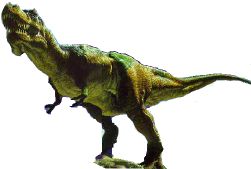The situations we find ourselves in are the result of previous actions; a 'history' or 'evolution', albeit sometimes on a small scale. In the course of time different people have introduced and developed different approaches for particular events. The character of this process is demonstrated in the continuum concept as set forth by Jean Liedloff in her book of that title. Any system has the tendency to develop, not just at random, but in the interest of the kind or species. Growth is directed towards obtaining greater stability, i.e. greater diversity and complexity. If the system is fit enough, it will be able to better adapt and adjust to changing environments. This is the process of evolution.
Any individual (i.e.system) will aim at more fitness, that is to say, more stability in diversity and complexity.
So the initial conclusion will be that the fittest will survive, yet this is by no means always the case. The fittest species may be a misfit or unfitting with the surroundings and thus become extinct. As Kenneth Boulding has said: Survival is for the fitting and not the fittest. The evolution of living things shows the characteristics of this development. For example, the last of the dinosaurs must have been very fit to survive .......
 yet they were unable to survive as a species. The species was fit, yet could not learn enough to remain fitting.
yet they were unable to survive as a species. The species was fit, yet could not learn enough to remain fitting. Learning is the process in which inherent needs of information are filled in and processed. The information is integrated in the system and the degree of integration will determine the fittingness of the species. However, in order to be able to learn one needs the right learning system, and the willingness to deal with change. For something newly learned may make my world collapse. (cf. insight)
Like in learning to speak, there is increasing complexity. And where one species disappears, others survive and manage to change or evolve. These species continue to become more complex and diverse. They continue to adapt and stabilize. It is very likely that many 'first forms' did not survive before one was fit enough to be able to come up with such variation that no unforeseen event could make it disappear. The same is seen in everyday life cycles. Where some individuals thrive and prosper other wither and go bankrupt.
In each form and part of the form (=people and departments of the enterprise), the stabilizing principle is operable, it is fed by information of inherited experience. Information obtained through its many contacts. The effective, efficient and creative individual will therefore be characterized by stability in diverseness and complexity.
What matters for the creative individual is to be able to see and visualize the way other people see or rather want to see their situations. This will only be possible if the looker has a clear view of her/his own view of the world.
As stated before the existing situation is always the result of historical processes, which have provided knowledge (fitness). This will always mean a complex system dealing as efficiently as possible with the situation (fittest). But besides efficiency the effectiveness is extremely important. For instance, in education lectures for large audiences show the efficiency principle at work. Case studies and group teaching aim at effectiveness. Good education will try to combine the two forms. Uncreative education will be characterized by the efficiency principle.
The basic form of each part of the system is a reflection of the experiences it expected: "programmed expectations" as it were. The experiences a system can adequately deal with are defined by the conditions to which the system before has adapted.
To remain fitting any person will have to continue to learn. This learning is a subjective process for it is I who decide if and when it wil happen. It is always related to knowledge that is considered necessary. The associative process guarantees the subjectiveness.
The environment is learned by association. Getting to know the world by means of association means that objects are included in our thinking without noticing any particulars. Only later experiences which somehow differ will make us pay attention. The new situations will be vaguely similar, yet when there is awareness of significant differences, these will draw the attention. Thus the environment is first learned in a rough manner and subsequently ever more detailed. (this view is expressed by Jean Liedloff, see site)
However, whereas we all start with an enormous potential, we soon become adjusted to a certain range and I will see what I want to see. All the incoming information is processed and filtered by my brains and accepted or rejected as it has been conditioned.